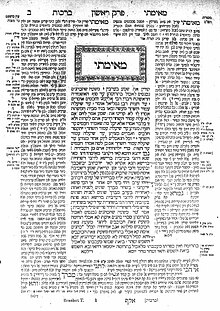
Hypertext is text displayed on a computer display or other electronic devices with references (hyperlinks) to other text that the reader can immediately access. Hypertext documents are interconnected by hyperlinks, which are typically activated by a mouse click, keypress set, or screen touch. Apart from text, the term "hypertext" is also sometimes used to describe tables, images, and other presentational content formats with integrated hyperlinks. Hypertext is one of the key underlying concepts of the World Wide Web, where Web pages are often written in the Hypertext Markup Language (HTML). As implemented on the Web, hypertext enables the easy-to-use publication of information over the Internet.
Corpus linguistics is the study of a language as that language is expressed in its text corpus, its body of "real world" text. Corpus linguistics proposes that a reliable analysis of a language is more feasible with corpora collected in the field—the natural context ("realia") of that language—with minimal experimental interference.
Ruby characters or rubi characters are small, annotative glosses that are usually placed above or to the right of logographic characters of languages in the East Asian cultural sphere, such as Chinese hanzi, Japanese kanji, and Korean hanja, to show the logographs' pronunciation; these were formerly also used for Vietnamese hán tự and chữ nôm, and may still occasionally be seen in that context when reading archaic texts. Typically called just ruby or rubi, such annotations are most commonly used as pronunciation guides for characters that are likely to be unfamiliar to the reader.
In linguistics, a corpus or text corpus is a language resource consisting of a large and structured set of texts. In corpus linguistics, they are used to do statistical analysis and hypothesis testing, checking occurrences or validating linguistic rules within a specific language territory.
Collaborative writing, or collabwriting is a method of group work that takes place in the workplace and in the classroom. Researchers expand the idea of collaborative writing beyond groups working together to complete a writing task. Collaboration can be defined as individuals communicating, whether orally or in written form, to plan, draft, and revise a document. The success of collaboration in group work is often incumbent upon a group's agreed upon plan of action. At times, success in collaborative writing is hindered by a group's failure to adequately communicate their desired strategies.
Web annotation refers to
- online annotations of web resources such as web pages or parts of them, and
- a set of W3C standards developed for this purpose.

Marginalia are marks made in the margins of a book or other document. They may be scribbles, comments, glosses (annotations), critiques, doodles, drolleries, or illuminations.
An annotation is extra information associated with a particular point in a document or other piece of information. It can be a note that includes a comment or explanation. Annotations are sometimes presented in the margin of book pages. For annotations of different digital media, see web annotation and text annotation.
Social bookmarking is an online service which allows users to add, annotate, edit, and share bookmarks of web documents. Many online bookmark management services have launched since 1996; Delicious, founded in 2003, popularized the terms "social bookmarking" and "tagging". Tagging is a significant feature of social bookmarking systems, allowing users to organize their bookmarks and develop shared vocabularies known as folksonomies.
Computer-supported collaborative learning (CSCL) is a pedagogical approach wherein learning takes place via social interaction using a computer or through the Internet. This kind of learning is characterized by the sharing and construction of knowledge among participants using technology as their primary means of communication or as a common resource. CSCL can be implemented in online and classroom learning environments and can take place synchronously or asynchronously.
An edublog is a blog created for educational purposes. Edublogs archive and support student and teacher learning by facilitating reflection, questioning by self and others, collaboration and by providing contexts for engaging in higher-order thinking. Edublogs proliferated when blogging architecture became more simplified and teachers perceived the instructional potential of blogs as an online resource. The use of blogs has become popular in education institutions including public schools and colleges. Blogs can be useful tools for sharing information and tips among co-workers, providing information for students, or keeping in contact with parents. Common examples include blogs written by or for teachers, blogs maintained for the purpose of classroom instruction, or blogs written about educational policy. Educators who blog are sometimes called edubloggers.
Balanced literacy is a theory of teaching reading and writing the English language that arose in the 1990s and has a variety of interpretations. For some, balanced literacy strikes a balance between whole language and phonics and puts an end to the so called reading wars. Others say balanced literacy, in practice, usually means the whole language approach to reading.

Mindomo is a versatile freemium collaborative mind mapping, concept mapping and outlining tool developed by Expert Software Applications. It can be used to develop ideas and interactively brainstorm, with features including sharing, collaboration, task management, presentation and interactive web publication.

Computers in the classroom include any digital technology used to enhance, supplement, or replace a traditional educational curriculum with computer science education. As computers have become more accessible, inexpensive, and powerful, the demand for this technology has increased, leading to more frequent use of computer resources within classes, and a decrease in the student-to-computer ratio within schools.

Hypertext is text displayed on a computer or other electronic device with references (hyperlinks) to other text that the reader can immediately access, usually by a mouse click or keypress sequence. Early conceptions of hypertext defined it as text that could be connected by a linking system to a range of other documents that were stored outside that text. In 1934 Belgian bibliographer, Paul Otlet, developed a blueprint for links that telescoped out from hypertext electrically to allow readers to access documents, books, photographs, and so on, stored anywhere in the world.
The Maryland Institute for Technology in the Humanities (MITH) is an international research center that works with humanities in the 21st century. A collaboration among the University of Maryland College of Arts and Humanities, Libraries, and Office of Information Technology, MITH cultivates innovative research agendas clustered around digital tools, text mining and visualization, and the creation and preservation of electronic literature, digital games, virtual worlds.
Literature Circles in EFL are teacher accompanied classroom discussion groups among English as a foreign language learners, who regularly get together in class to speak about and share their ideas, and comment on others' interpretations about the previously determined section of a graded reader in English, using their 'role-sheets' and 'student journals' in collaboration with each other.
The Alpheios Project is an open source initiative originally focused on developing software to facilitate reading Latin and ancient Greek. Dictionaries, grammars and inflection tables were combined in a set of web-based tools to provide comprehensive reading support for scholars, students and independent readers. The tools were implemented as browser add-ons so that they could be used on any web site or any page that a user might create in Unicoded HTML.
Drama annotation is the process of annotating the metadata of a drama. Given a drama expressed in some medium, the process of metadata annotation identifies what are the elements that characterize the drama and annotates such elements in some metadata format. For example, in the sentence "Laertes and Polonius warn Ophelia to stay away from Hamlet." from the text Hamlet, the word "Laertes", which refers to a drama element, namely a character, will be annotated as "Char", taken from some set of metadata. This article addresses the drama annotation projects, with the sets of metadata and annotations proposed in the scientific literature, based markup languages and ontologies.






